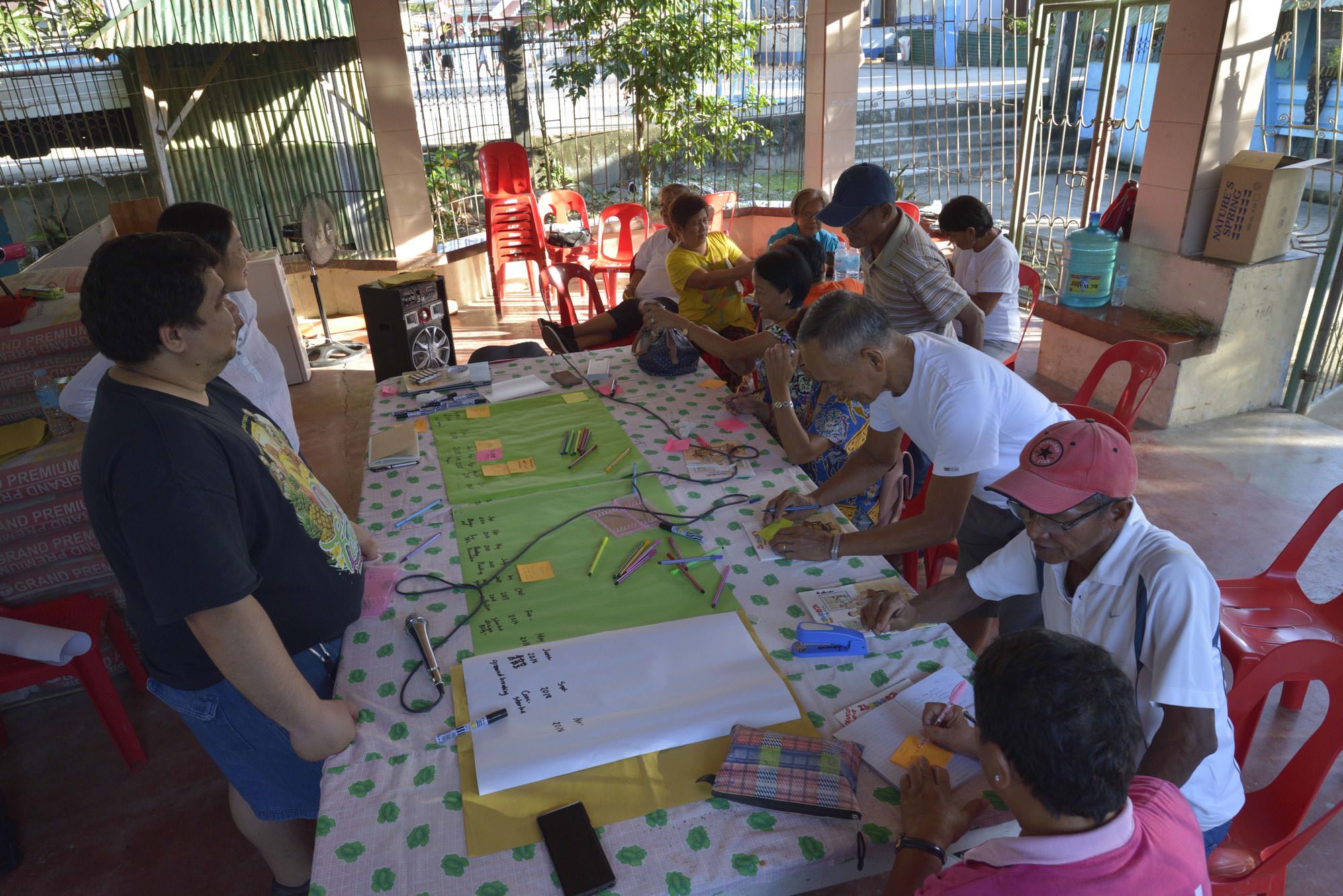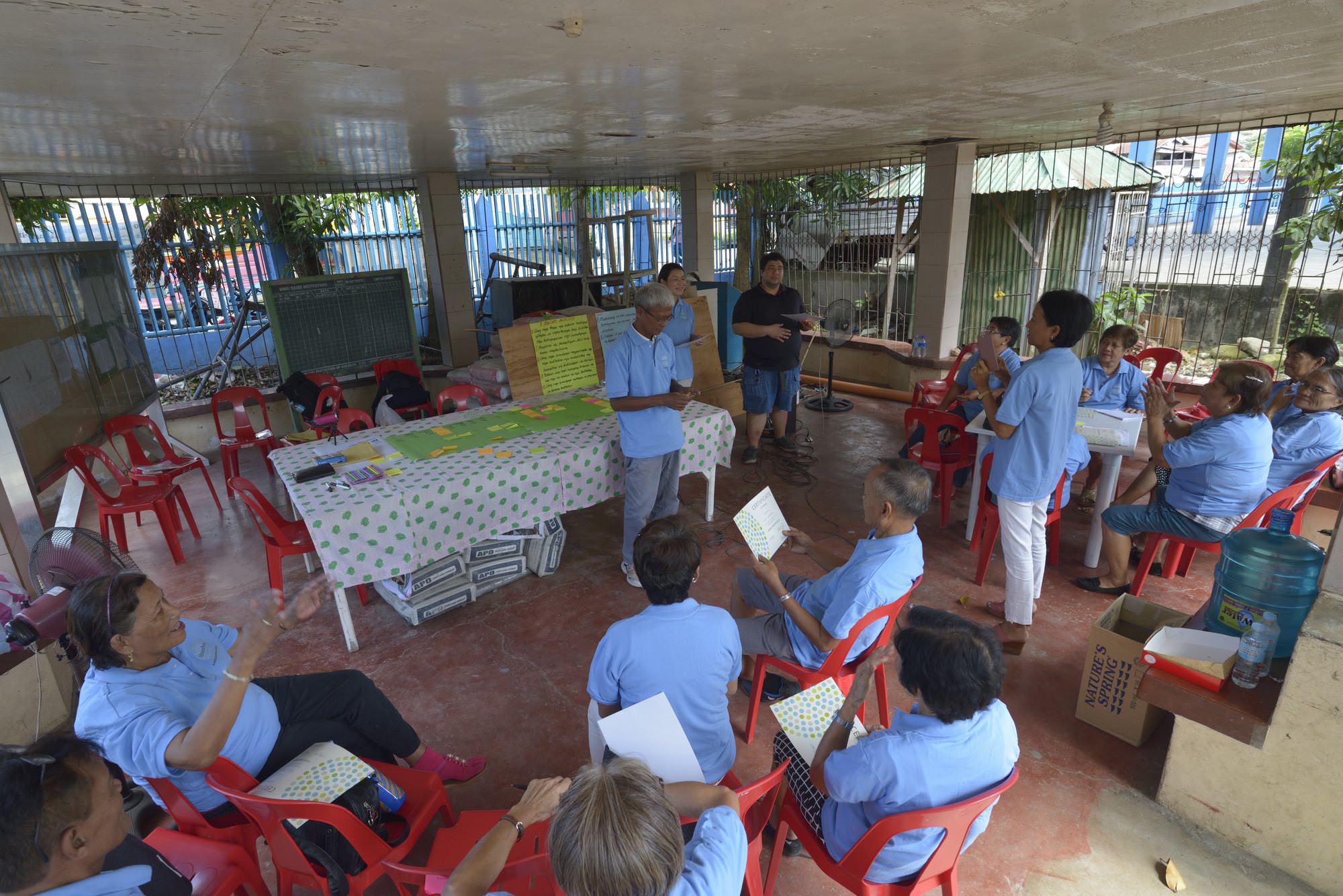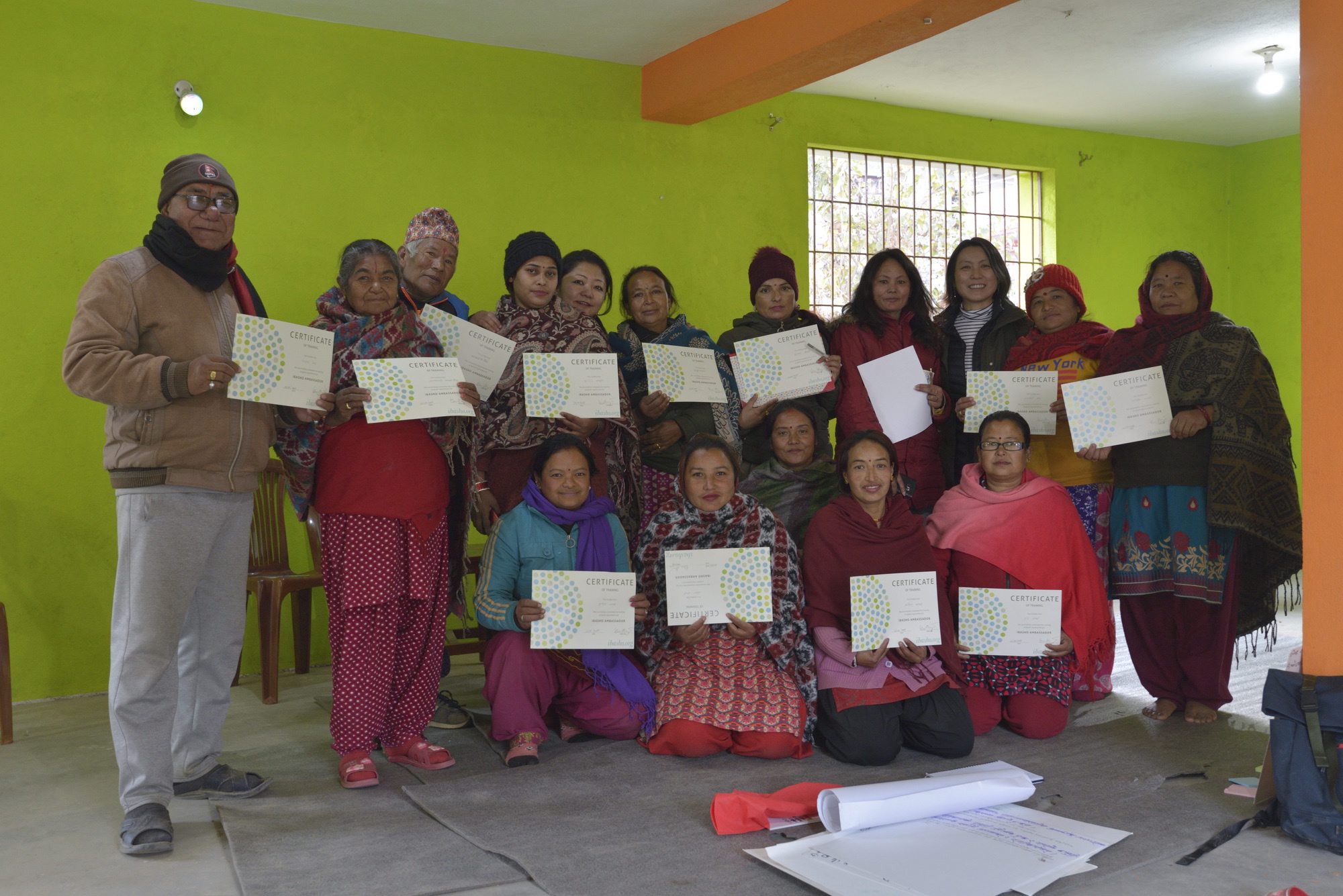To help replicate the Ibasho model, Ibasho developed the Ibasho Ambassador program. Ambassadors are elders involved in Ibasho projects who want to help explain the Ibasho concept and approach to community members and local leaders who are implementing Ibasho projects elsewhere. A two-day training prepared a group of elders to be part of the technical assistance teams that help set up new Ibasho projects. Thirteen elders from Ibasho Philippines and 20 from Ibasho Nepal participated in the training, which included modules on Ibasho’s eight core principles, doing outreach, making presentations, facilitating meetings, and more.
Contents
Training and Facilitation
The trainer introduced the ground rules of Ibasho’s training, which include the following:
- Safe place. All participants should feel safe to share their thoughts. People should agree to disagree.
- Constructive criticism. Participants should critique others’ opinions and ideas only when they have alternative suggestions. Avoid criticism for the sake of criticism.
- Accountability. Everyone must participate in the entire program, and contribute on discussions.
Format: Lecture and group activities
Learning objectives
- Participants learn the objective and process of the training.
- Participants help create a welcoming atmosphere for the training session.
- Participants help create a safe space where participants are able to freely share their opinions with others.
- Participants develop meaningful relationships with their neighbors. We think we know our friends in the community, but there is so much we do not know about one another outside of our work lives or what we see in public gatherings. It is important to get to know your neighbors in personal level to work on the Ibasho project.
Ibasho’s Eight Principles
The trainer demonstrated ways in which the eight principles can be introduced, so participants learn how to present the concept. The scenario presented was that visitors from a few communities in the Philippines were visiting the Ibasho Philippines project in the Barangay Bagong Buhay. Each group of trainees gave the “visitors” a tour and explained the Ibasho principles to them.
Participants worked in groups of five or six to translate the Ibasho principles into their own language. They then presented their final translations, to practice presenting the concepts in their own language to community leaders, friends and family, children, local groups, visitors, and local government officials. They also get practice in answering questions about the concepts.
Format: Group activities, presentation, lecture, discussion
Learning objectives
- Participants learn how to introduce Ibasho concept and initiate conversation on creating a support network for elders.
- Participants develop a culturally appropriate interpretation of Ibasho principles.
- Participants learn effective ways of presenting their ideas to others.
Explaining the Ibasho process
The trainer guided the elders in reviewing all the Ibasho activities they had coordinated and recording them in chronological order. After a group discussion of the work they had done, each participant wrote a sticky note for each of the activities they had participated in and placed it on a timeline. Participants then chose their favorite and least favorite activity and discussed what they did or didn’t like about them.
Format: Group work
Learning objectives
- Participants learn how to introduce the Ibasho process to other community members.
- Participants share ideas for improve their project.
- Participants learn how to effectively present the Ibasho process they have implemented.
Teaching the Ibasho program to others
The trainer taught effective communications and presentation techniques for teaching other people how to implement an Ibasho project. After a group training on how to explain the Ibasho concept and process, participants split into two groups, each of which discussed how to introduce the Ibasho principles to a community in the Philippines. Each group then delivered a 15-minute presentation to the other group and responded to questions.
Format: Group activities
Learning objectives
- Participants learn how to present their project by telling a story, not just listing activities.
- Participants learn to focus on the activities and programs that Ibasho elders organized rather than the technical help that they received.
- Participants learn about things that are critical to include, like explaining why the group of elders wanted to adapt Ibasho and talking about Ibasho’s peer-to-peer network and how it affected their work.
- Participants learn how to handle challenging questions, including those regarding funding.
- Participants learn to avoid political conversations.
Explaining the role of the Ibasho hub
The trainer demonstrated how to facilitate group discussions on how to answer a critical question: “Is building a physical infrastructure a necessary part of an Ibasho project?” Participants learn that it is not necessary that there be a single hub for all Ibasho activities, which may be spread throughout a community in the “village as Ibasho” model. However, it is crucial that someplace, whether it be a single location or an entire community, be transformed into an ibasho: a place where elders and other community members can be truly themselves and feel at home. The session included discussions about the difference between a building and a place, the purpose and function of an Ibasho building, and the pros and cons of new construction, renovation and using existing spaces and buildings. Ultimately, the trainer stressed, the goal is not to create a new place; it is to incorporate the eight Ibasho principles into the community.
Accountability and outreach
The trainer facilitated a group discussion on how to foster accountability among Ibasho members to help them maintain their motivation. Participants shared their experiences with and thoughts about Ibasho activities, developing a shared understanding of what they need to do as the elders leading the Ibasho project to ensure each elder’s accountability and recruit more community members of all ages to make the operation sustainable for the long term. Each group presented ideas and suggestions and answered questions.
What can I contribute?
Trainees learned how to build a stronger collaboration with other elders by getting clear commitments about what each will contribute. For this group exercise, everyone wrote “What I can contribute to the Ibasho project?” on a sticky note and placed it on piece of chart paper. Each then presented his or her idea to the participants and committed to at least one action.
Commencement ceremony
Everyone who participated in the full two-day training was given an Ibasho Ambassador certificate.
Lessons learned from Ibasho Ambassador training
When it comes to the format for the Ibasho Ambassador training, elders preferred group discussions to lectures. When working in smaller groups, five to six people was found to be an effective size. Most participants needed a microphone when speaking to the whole group, since most have soft voices. Trainers should be prepare with large sheets of paper to be used when compiling elder contributions made on sticky notes. And finally, trainers should schedule frequent short breaks and a long lunch hour to allow the elders to rest.
The trainers should take care not to rush the process, giving the elders tasks they can complete without anxiety, waiting until they have answers to share with others before inviting them to speak, giving them time to come up with solutions themselves, and encouraging them to dig deeper during group discussions rather than hurrying to wrap up conversations. They should also ensure that all participants have a chance to speak.
The training should cover the following basics:
- Make sure the elders understand the Ibasho concept, in part by having them translate the eight Ibasho principles into their words and explain them to the rest of the group
- Clarify the importance of building/place making in the Ibasho development process
- Explain how to teach others about Ibasho’s goal, mission, approach and eight principles, providing a standardized format for doing so
- Why it is important to create a pictorial booklet and how to use it
- Set up clear ground rules for meetings in the beginning and repeat them throughout
- While the initial training did not do so, the trainers decided that future trainings should integrate a session devoted to the question “What is the ideal Ibasho project?” In that session, each group can develop their ideal Ibasho project, outlining all six key elements:
1.Personnel
2.Program
3.Infrastructure
4.Working relationship with local and central government
5.Ibasho technical team
6.Community and elders








